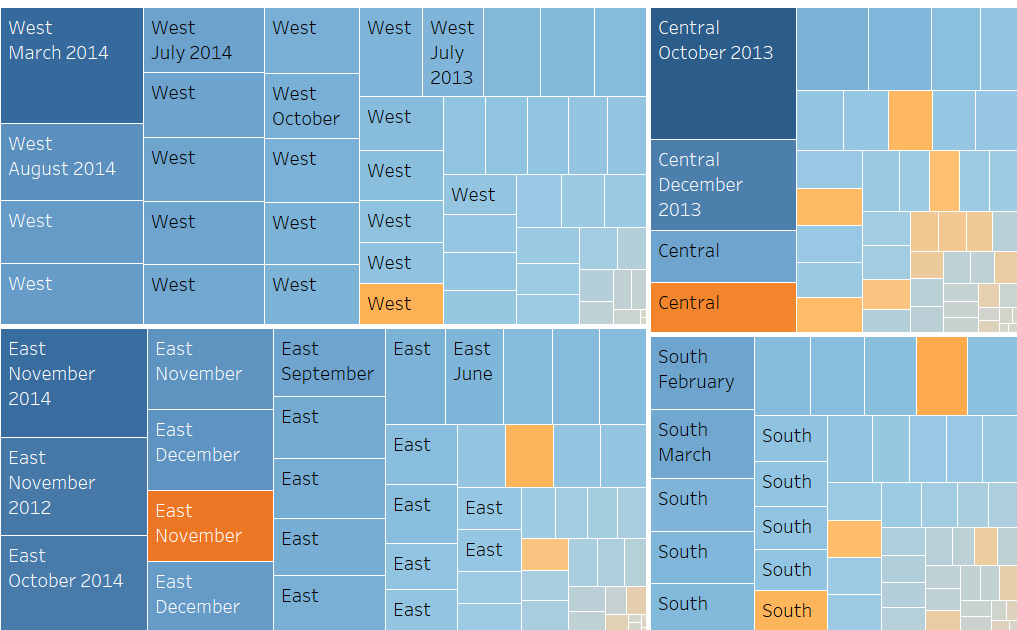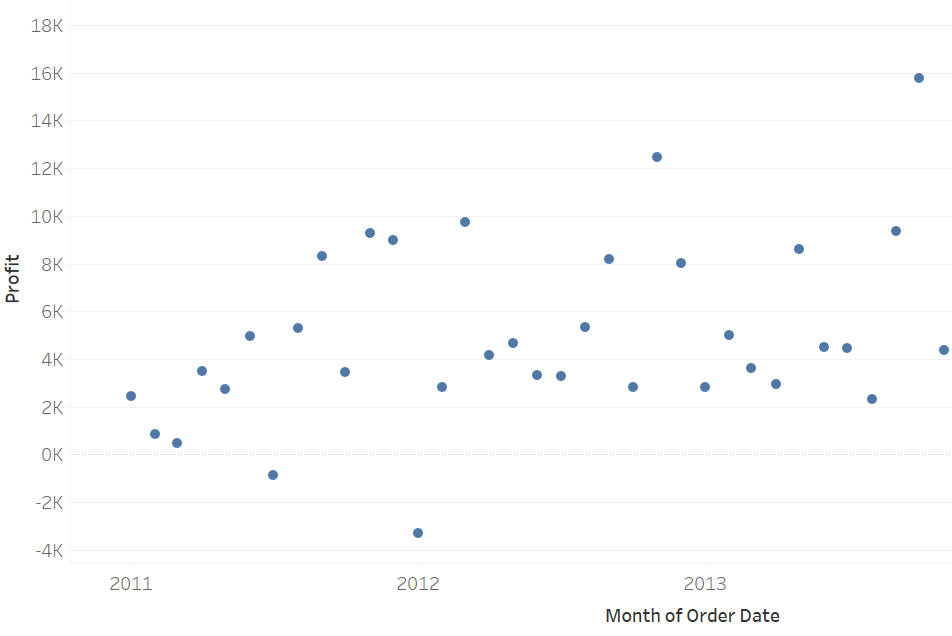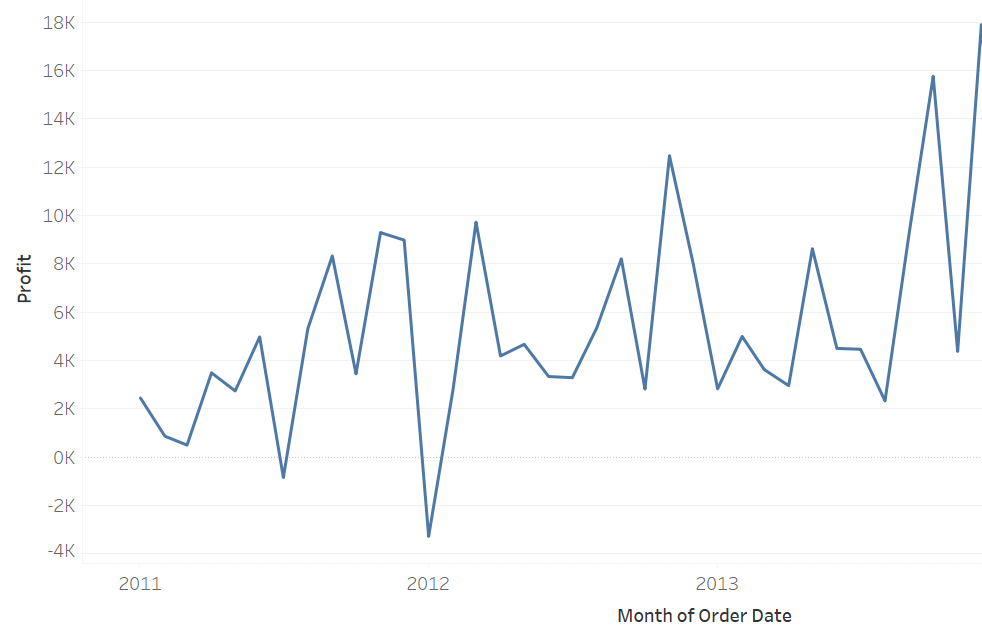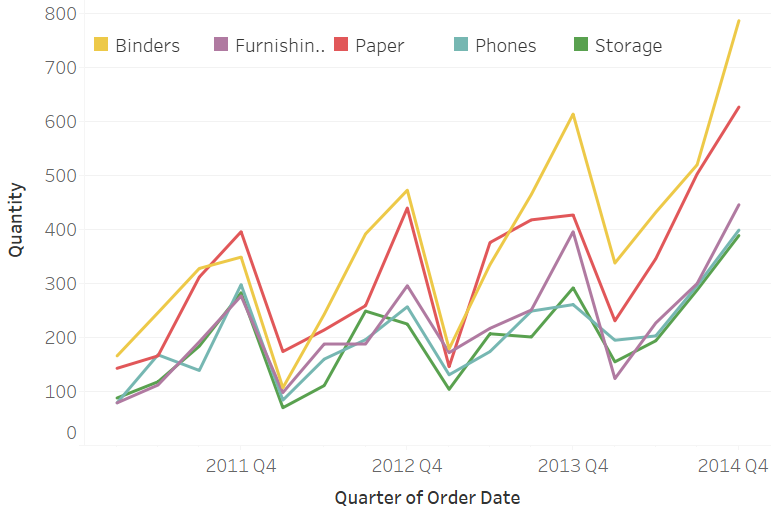bi数据分析师

将美丽融入数据 (Putting the Beauty in Data)
Have you ever been ravished by Vizzes on Tableau Public that look like only magic could be in play to display so much data in such a pleasing way?
您是否曾经被Tableau Public上的Vizzes迷住了,看起来只有魔术才能发挥作用,以这种令人愉悦的方式显示如此多的数据?
Most of those Vizzes are a result of exploiting how humans perceive visual landscapes (parts of a whole). The principles in play here are called the Gestalt principles. Gestalt in German means “Pattern” or “Configuration”. The Gestalt principles aim to make the process of visual design aesthetically pleasing as well as the data easier to consume.
这些Vizzes中的大多数是利用人类如何看待视觉景观(整体的一部分)的结果。 这里发挥作用的原则称为格式塔原则。 格式塔在德国的意思是“样式”或“配置”。 格式塔原理旨在使视觉设计过程更加美观,并使数据更易于使用。
There are numerous Gestalt principles, but I will be demonstrating the 6 most common ones, using Tableau’s most frequently used ‘Sample Superstore’ dataset. Though these principles are being explained individually, often more than one Gestalt principle is used in a single visualisation. However, a single principle tends to dominate.
格式塔(Gestalt)原理有很多,但我将使用Tableau最常用的“样本超市”(Sample Superstore)数据集演示6种最常见的原理。 尽管对这些原理进行了单独说明,但在一次可视化中通常会使用多个格式塔原理。 但是,一个原则倾向于占主导地位。
1.邻近 (1. Proximity)
The principle of proximity states that objects that are placed close to each other are perceived as more related as compared to the ones that are placed far apart
接近原理指出,相较于相隔较远的物体,彼此靠近的物体被认为更相关

In the above visualisation, profit realised by the store is presented by region and by month. Using the principle of proximity, we see profits of all the months in East region as related to each other. Similarly for Central, West and South regions.
在上面的可视化中,商店实现的利润按地区和月份显示。 使用接近原理,我们看到东部地区所有月份的利润彼此相关。 中部,西部和南部地区也是如此。
2.相似性 (2. Similarity)
The principle of similarity states that objects that are similar to each other are perceived as more related that the dissimilar ones
相似性原理指出,彼此相似的对象比不相似的对象更相关
Here, similarity means similarity by shape, colour, size, font, texture, etc.
在这里,相似性是指形状,颜色,大小,字体,纹理等之间的相似性。

In the above graph, which depicts the profit realised by the store each month from 2011 to 2013, and by product category, the concept of similarity plays out well. The circles belonging to a single colour pertain to a single region, which is the use of the Similarity Principle. The area of the circle depicts the relative magnitude of the profit in each group for each month.
上图描绘了商店从2011年到2013年每个月实现的利润,并按产品类别描述了相似性的概念。 属于单一颜色的圆属于一个区域,这是使用相似原理的。 圆圈区域表示每个月每个组的利润的相对大小。
3.关闭 (3. Closure)
The principle of closure states that the human mind tends to perceive a collection of multiple elements as a components of a whole
封闭原则指出,人类的思维倾向于将多个元素的集合视为整体的组成部分

The above Viz shows the profit earned by region and by month. The arrangement of the components is in such a way that it easy to perceive four polygons (West and East as rectangles, South and Central as squares). Though each of the larger polygons are made of numerous individual blocks.
上面的Viz显示了按地区和按月获得的利润。 组件的排列方式很容易感知四个多边形(西和东为矩形,南和中为方形)。 虽然每个较大的多边形均由许多单独的块组成。
4.连续性 (4. Continuity)
The principle of continuity states that elements arrange on a line or curve are perceived to be more related as compared to those that are not on it
连续性原则指出,与不位于线上或曲线上的元素相比,排列在直线或曲线上的元素被认为更相关


The two pictures above demonstrate this principle. The data that is being plotted is the total profit realised by the store each month from 2011 to 2013. The graph on the left plots the data as disconnected dots. This seems to be difficult to understand. Has the profit grown or reduced month over month?
上面的两张图片展示了这一原理。 正在绘制的数据是商店从2011年到2013年每个月实现的总利润。左侧的图形将数据绘制为不连续的点。 这似乎很难理解。 利润是否逐月增加或减少?
The graph on the right makes it far more comprehensible. The same data is plotted as a line connecting the data points. The connectivity gives a better perspective of the month on month profit trend.
右图使它更容易理解。 相同的数据绘制为连接数据点的线。 连接性使您可以更好地了解月度利润趋势。
5.并行性 (5. Parallelism)
The principle of parallelism states that elements arranged parallel to each other are perceived to be more related as compared to those that aren’t parallel
并行性原则指出,与不平行的元素相比,彼此平行排列的元素被认为更相关

This might seem like the easiest principle to demonstrate. The lines that are parallel to each other show a similar trend in profits while the non-parallel ones show dissimilar trends.
这似乎是最容易证明的原理。 彼此平行的线显示出相似的利润趋势,而非平行线则显示出不同趋势。
大! 但是我们如何使用这些原则? (Great! But how do we use these principles?)
It would be a miracle to fit all of them into one single Viz and managing to make it look appealing. Finding the right number of principles to use is best left to the artist (now that you are working on appealing to the visual senses, you’re an Artist!)
将所有这些安装到单个Viz中并设法使其具有吸引力将是一个奇迹。 找到合适数量的使用原则最好由艺术家决定(既然您正在努力吸引视觉感官,那么您就是艺术家!)
However, using the Gestalt principles each time you ideate your dashboards or vizzes might help in making them aesthetically enticing as well as easy to consume.
但是,每次构思仪表盘或Vizz时都使用格式塔原则,可能有助于使它们具有美观的吸引力并易于使用。
翻译自: https://medium.com/@analyticsfortheimpatient/5-gestalt-principles-for-bi-engineers-and-data-analysts-69033502a209
bi数据分析师
本文来自互联网用户投稿,该文观点仅代表作者本人,不代表本站立场。本站仅提供信息存储空间服务,不拥有所有权,不承担相关法律责任。如若转载,请注明出处:http://www.mzph.cn/news/389599.shtml
如若内容造成侵权/违法违规/事实不符,请联系多彩编程网进行投诉反馈email:809451989@qq.com,一经查实,立即删除!
)





旋转矩阵)











